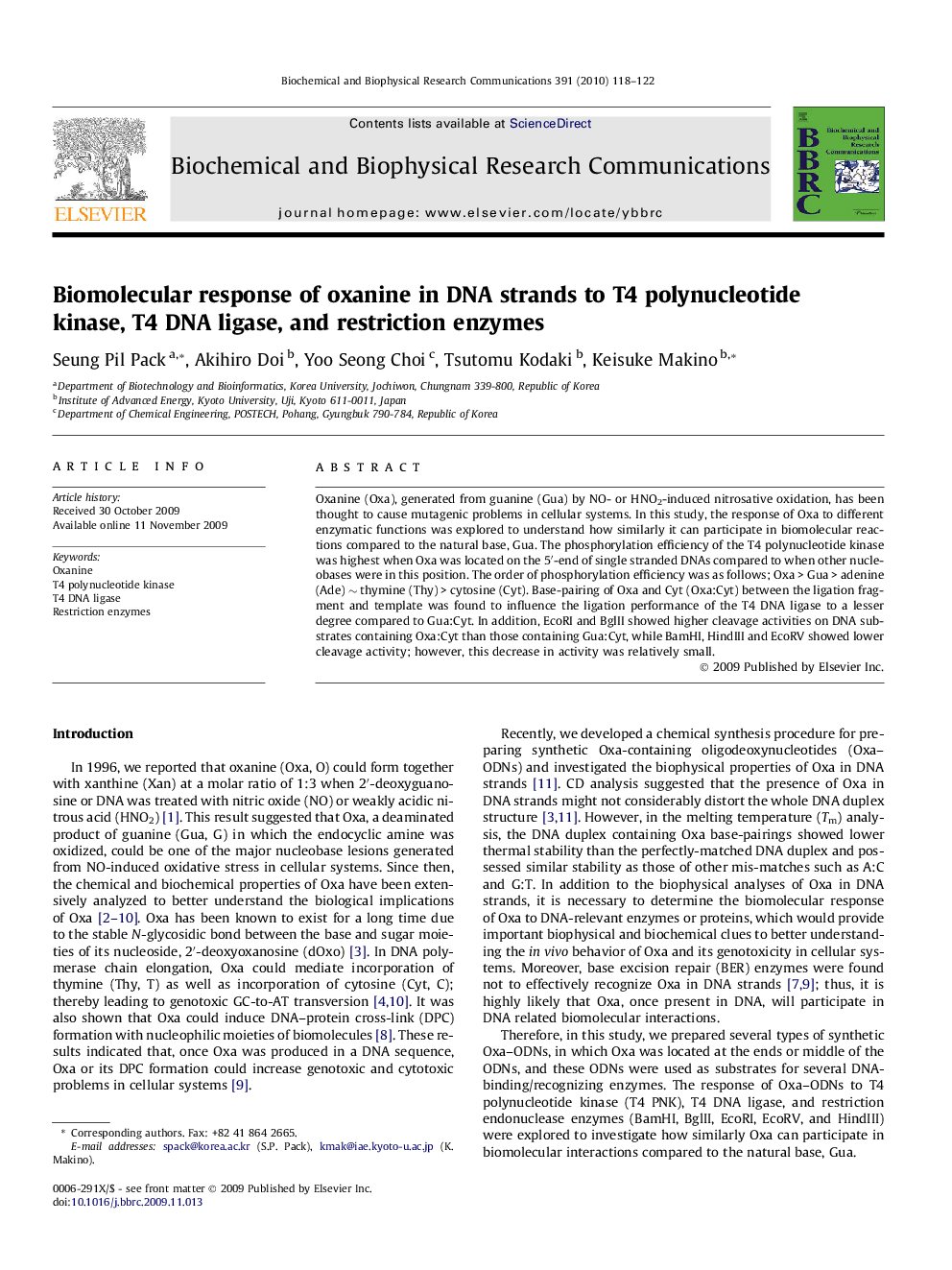| Article ID | Journal | Published Year | Pages | File Type |
|---|---|---|---|---|
| 10765311 | Biochemical and Biophysical Research Communications | 2010 | 5 Pages |
Abstract
Oxanine (Oxa), generated from guanine (Gua) by NO- or HNO2-induced nitrosative oxidation, has been thought to cause mutagenic problems in cellular systems. In this study, the response of Oxa to different enzymatic functions was explored to understand how similarly it can participate in biomolecular reactions compared to the natural base, Gua. The phosphorylation efficiency of the T4 polynucleotide kinase was highest when Oxa was located on the 5â²-end of single stranded DNAs compared to when other nucleobases were in this position. The order of phosphorylation efficiency was as follows; Oxa > Gua > adenine (Ade) â¼Â thymine (Thy) > cytosine (Cyt). Base-pairing of Oxa and Cyt (Oxa:Cyt) between the ligation fragment and template was found to influence the ligation performance of the T4 DNA ligase to a lesser degree compared to Gua:Cyt. In addition, EcoRI and BglII showed higher cleavage activities on DNA substrates containing Oxa:Cyt than those containing Gua:Cyt, while BamHI, HindIII and EcoRV showed lower cleavage activity; however, this decrease in activity was relatively small.
Related Topics
Life Sciences
Biochemistry, Genetics and Molecular Biology
Biochemistry
Authors
Seung Pil Pack, Akihiro Doi, Yoo Seong Choi, Tsutomu Kodaki, Keisuke Makino,
